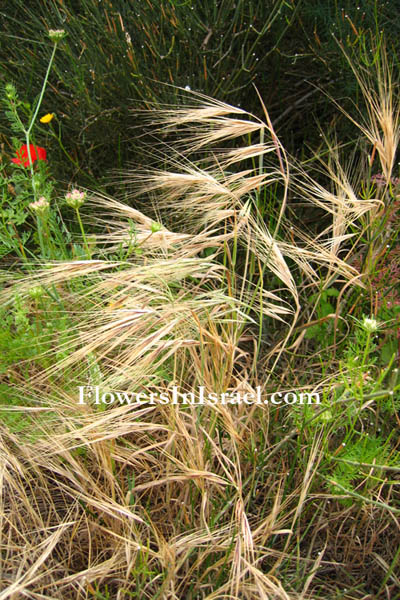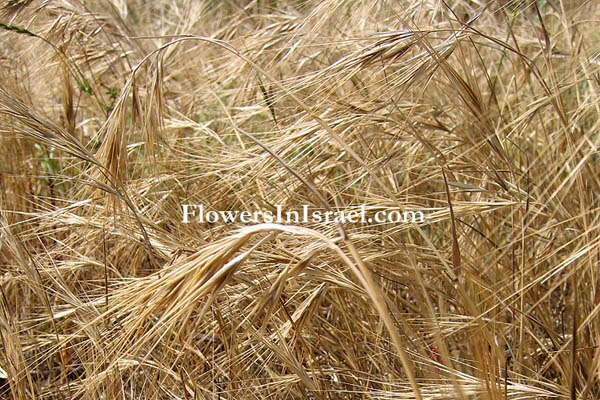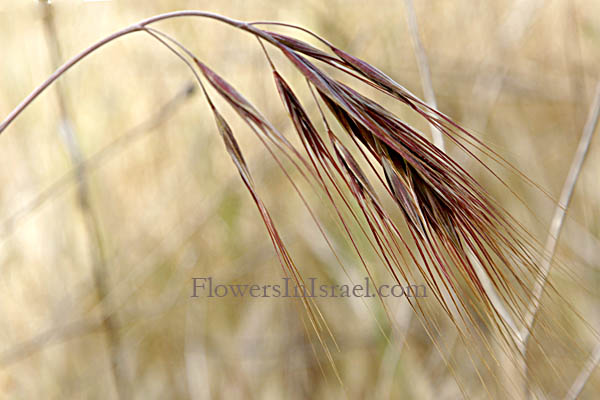Hebrew: ברומית הגגות, Arabic: الشويعرة
| Scientific name: | Bromus tectorum L. | |
| Common name: | Wall Brome Grass, Cheatgrass | |
| Hebrew name: | ברומית הגגות | |
| Arabic name: | الشويعرة | |
| Plant Family: | Graminea (Poaceae), Grass Family, משפחת הדגניים |

|
| Life form: | Annual | |
| Stems: | Densely tufted, 5-60 cm tall; mostly erect, or spreading; not branched; At maturity, the plant has a reddish-purple color | |
| Leaves: | Alternate, blades 5- 12 cm long, 1-7 mm wide; flat, hairy or not; sheaths closed and hairy | |
| Flowers: | Dense, slender, drooping, onesided, 5-15 cm long; awns are purple at maturity and 12-14 mm long; spikelets numerous, hairy, narrow, on slender curved threadlike branches; each 3 to 7 florets | |
| Flowering Period: | March, April, May | |
| Habitat: | Batha, Phrygana | |
| Distribution: | Mediterranean Woodlands and Shrublands, Semi-steppe shrublands, Shrub-steppes, Deserts and extreme deserts, Montane vegetation of Mt. Hermon | |
| Chorotype: | Mediterranean - Irano-Turanian - Saharo-Arabian | |
| Summer shedding: | Ephemeral |

Derivation of the botanical name: Bromus, from the Greek broma, "food", and bromos, "oat". tectorum, roof; roofed building, shelter; of the roofs. The Hebrew word:ברומית, bromit, from the foreign languages.

|